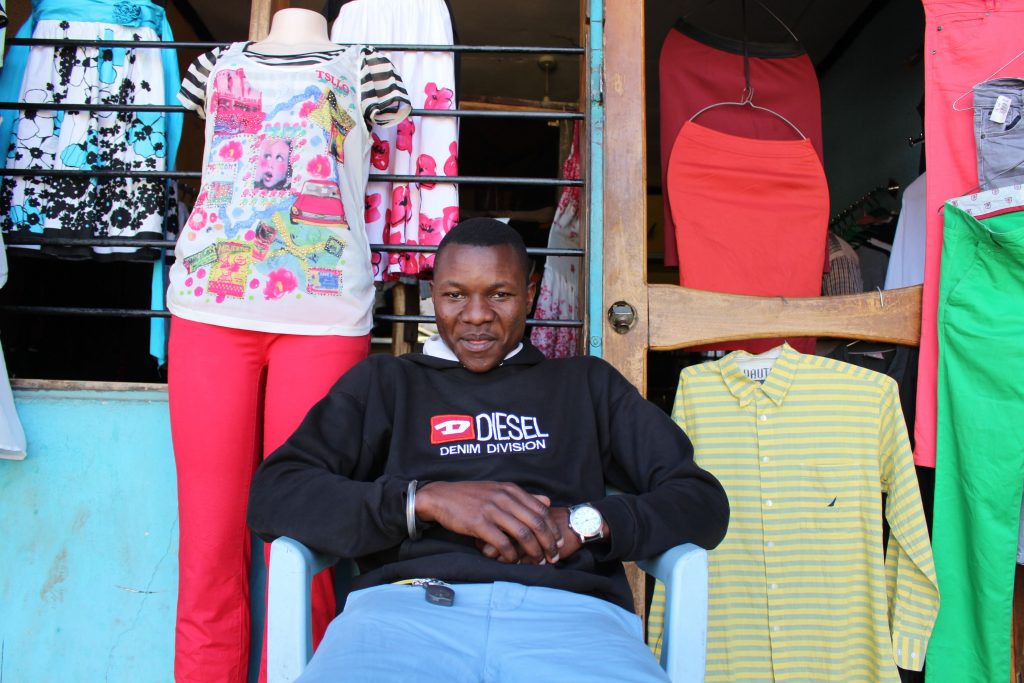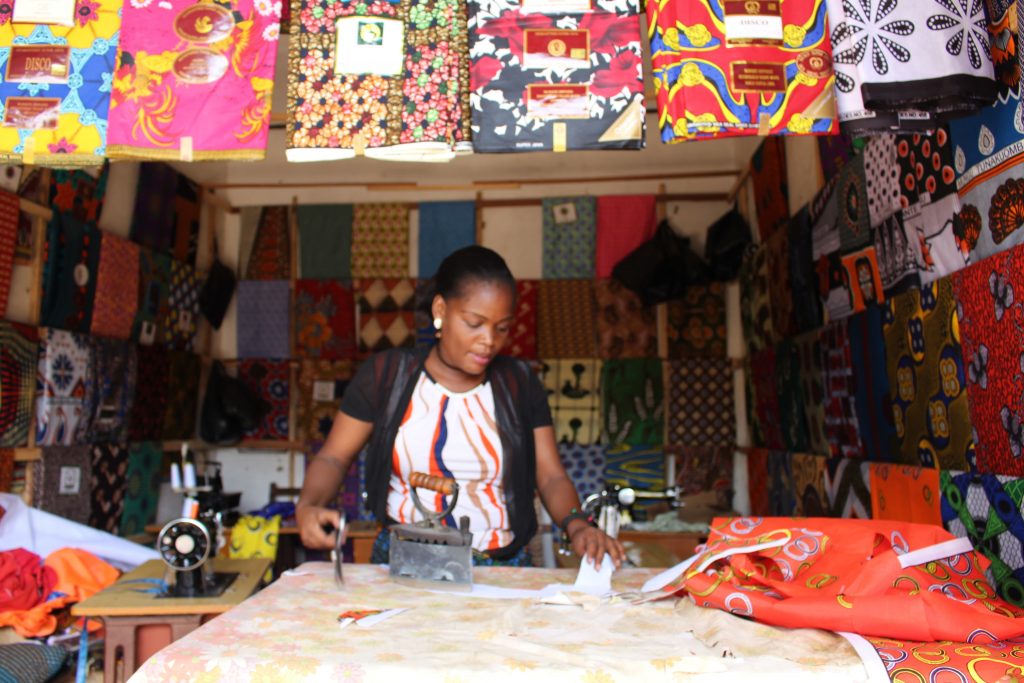T he EAC’s crackdown on second-hand clothing poses a threat to thousands of East Africans who earn their living importing as wholesalers or the men and women in Arusha’s central market selling used-clothes.
Edward* operates a small used clothing shop in Arusha and relies on the income to support his parents who are subsistence farmers. He buys brand name used clothes from the women in Arusha’s Central market and sells them for a higher price in his own shop, aimed at middle-class Tanzanians. The Tanzanian government’s move to phase-out second-hand clothing has him worried about his future and how he will support his family.
“A lot of people depend on work in the second-hand clothing market,” he said.
“If we’re going to stop work on this, I don’t know what those millions of people in the second-hand market are going to do.”
The second-hand clothing business in Tanzania provides an opportunity for employment to uneducated and low-skilled people. Edward employs a 25-year-old man by the name of Charles Robert to work in his shop.

Robert has no formal education and relies on his job at the second-hand clothing shop to support himself. (Megan McPhaden)
In 2016, he started working for Edward as his shop keeper. Robert’s parents were unable to send him to school due to lack of finances and as a result his opportunities apart from farming, are limited as a result of his limited education.
Edward says he won’t be able to employ Robert if the government follows through with their plan.
“Now we pray to God the government stops to think about this situation because it would be hard for us, because we rely on these things,” he said.
The government’s position on phasing-out second-hand clothes is also unpopular among Tanzanian consumers who prefer them to clothes that are locally produced because of affordability and quality. As Neema*, a local Tanzanian woman, explains, the low cost of second-hand clothes allow middle to working class Tanzanians the opportunity to dress well, for less.
“I buy them [used clothes] because of the quality, but also because you get something for good quality at a good price, and when you put them on you look different,” she said.
“It’s better because you look unique.”
There are alternatives to purchasing used and new clothes. Alongside the new and used clothes being sold on the streets are yards of fabric. It’s not uncommon for Tanzanians with enough purchasing power to buy the fabric and commission local tailors to make them custom-made clothes. This tailor shop in Mugumu, a small village in northern Tanzania, is selling fabric that is imported from China.

A female tailor irons fabric inside her shop in Mugumu, a small village north of Serengeti National Park. (Megan McPhaden)
“We depend heavily on fabric made from China and some people can’t even afford the Chinese-made fabric,” Neema said.
Second-hand clothes are significantly cheaper in comparison to new clothes made in Tanzania or custom-tailored clothes. The fabrics on sale in Mugumu ranged in price from 15 to 30,000 Tanzanian shillings or $7 to $15 CAD. On top of the cost of the fabric, there is the added cost of paying a tailor to create the clothes. The cost of getting clothes tailored is often unaffordable for the vast majority of Tanzanians when you consider the median per capita monthly household income is 8,323 Tshs or approximately $4.70 CAD, according to 2000 data from the Tanzanian National Bureau of Statistics.
The dilemma of free market economics
The global second-hand clothing trade is characterized by the dependencies between developed countries in North America and EAC countries from both an economic and social standpoint. The issues are largely reflective of the global free market that have typically been championed by the developed world, who are the main benefactors. What arises is the right of these developing countries to economic self-determination.
There is ample opportunity for the EAC countries to become successful exporters of textiles and apparel, if textile and apparel industries receive necessary government support along with domestic or foreign investment to create the infrastructure that is required to produce at a scale that would make them competitive on the global stage. Preferential trade agreements are in place that would give them an advantage if they had the ability to produce larger volumes of textiles and apparel.
At present, the current protectionist strategy the EAC has taken to reduce the imports of second-hand clothes has proven ineffective in combating both the issues of weak domestic demand for locally produced textiles and illegal smuggling.
Until adequate infrastructure and government support is put in place to support EAC textile industries, tariffs will only succeed in disrupting textile recycling industries in North America and also potentially hurt EAC consumers like Neema in the process.
The EAC’s rejection of second-hand clothing from North America, exposes the vulnerability of current business models employed by charities and the textile recyclers, calling into question the sustainability of relying on global reuse markets. It also draws attention to the environmental issue these clothes pose in North America fueled by the fast-fashion industry and consumption habits of consumers. At the moment, there is no plan b.
*Neema and Edward’s names have been changed for their safety.